In today’s world, digital marketing is crucial for establishing a connection with your audience at opportune moments. It’s all about leveraging online and digital technologies to engage with potential customers. This approach differs significantly from traditional marketing by offering precise targeting and customization of marketing messages.
At its essence, digital marketing involves understanding and addressing consumer needs across a variety of digital platforms, such as social media, search engines, emails, websites, and mobile applications. The strength of digital marketing lies in its flexibility and the capacity for adapting to the changing preferences and behaviors of the audience. This strategy goes beyond mere message dissemination; it’s about fostering dialogue and cultivating relationships.
A key feature of digital marketing is its reliance on data. Every interaction online provides valuable insights, aiding in a deeper comprehension of consumer preferences and effective refinement of marketing strategies. Digital marketing isn’t just about reaching a wider audience; it’s about connecting in meaningful ways, influenced by the ever-growing digital nature of society. More people spending time online means businesses cannot afford to overlook the digital realm, which is now a pivotal arena for making connections, shaping opinions, and influencing decisions.
What is Digital Marketing?
Digital marketing encompasses all marketing efforts that harness electronic devices or the internet. It utilizes various digital channels such as search engines, social media, email, and other websites, enabling businesses to connect with existing and potential customers in the digital domain where they spend a significant amount of time.
At the heart of digital marketing is the internet, a powerful communication tool and marketing medium as highlighted by statistics from giants like Google and Facebook. The internet’s widespread accessibility breaks down traditional advertising barriers, offering unparalleled reach and engagement opportunities.
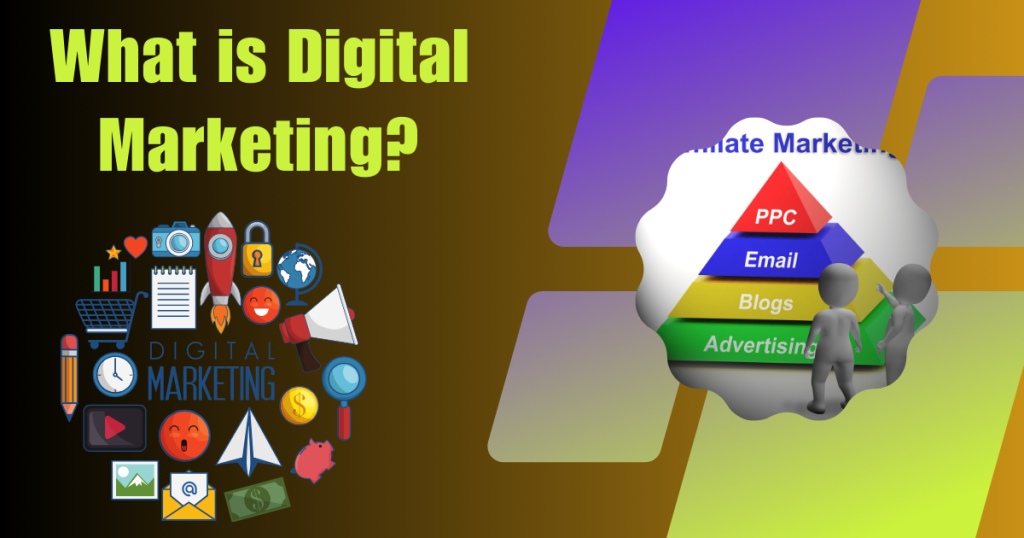
A critical element of digital marketing is Search Engine Optimization (SEO). This involves optimizing websites and content to achieve higher search engine rankings and visibility. Social media marketing, another integral component, uses platforms like Facebook, Twitter, and Instagram to engage with audiences and amplify a brand’s presence.
Email marketing remains a potent digital marketing tool, involving targeted and personalized communication to a group of recipients, effectively aiding in lead generation and customer relationship building.
Content marketing, forming the backbone of many digital marketing strategies, focuses on creating and sharing valuable, relevant, and consistent content. This can include blog posts, videos, and infographics, aimed at attracting and retaining a clearly defined audience.
Pay-Per-Click (PPC) advertising is yet another facet, where marketers pay a fee for each click on their ads. This method helps in attracting visits to your site more directly compared to organic methods.
Importance of Digital Marketing
In our digitally-dominated era, the importance of digital marketing is undeniable. It’s become a cornerstone for businesses aiming to flourish in a competitive landscape. Let’s delve into why digital marketing is so pivotal:
Global Reach: Digital marketing erases geographical boundaries, opening up a global platform for businesses. This global reach is a game-changer, especially when compared to the geographical limitations of traditional marketing.
Cost-Effectiveness: When it comes to budget, digital marketing offers an affordable alternative to traditional methods. It’s particularly advantageous for small businesses and startups, allowing them to make a big impact without a hefty investment.
Precision Targeting: Perhaps one of digital marketing’s most impressive feats is its ability to hone in on specific demographics. The tools and analytics at our fingertips allow for the crafting of tailor-made campaigns that speak directly to the interests, age, location, and more of the target audience.
Trackable, Measurable Results: With digital marketing, we’re no longer shooting in the dark. Every click, interaction, and engagement is trackable, providing us with a treasure trove of data. This feedback allows businesses to refine their strategies and understand their audience better.

Real-Time Engagement: Digital marketing thrives on immediate connections. Whether it’s through social media interactions, email queries, or website chats, it enables businesses to engage directly and meaningfully with their customers.
Adaptability: The digital landscape is ever-evolving, and digital marketing offers the flexibility to pivot and adapt swiftly. This agility is crucial for staying relevant and keeping pace with market trends and consumer behaviors.
Building Brand Reputation: Consistent, quality online content allows businesses to establish themselves as thought leaders in their field. This is key in building trust and a robust brand reputation.
SEO and Online Visibility: In a world where most of us turn to search engines for answers, a strong online presence is vital. Good digital marketing practices, particularly SEO, ensure that your business ranks well in search results, which is crucial for attracting potential customers.
The History of Digital Marketing
The history of digital marketing is as intriguing as it is diverse, reflecting how technology and consumer habits have evolved hand-in-hand. Let’s take a fresh look at this journey:
The Early Days (1970s-1990s): Imagine the digital world as a newborn. The 1970s saw the internet’s inception, a groundbreaking moment. Yet, it wasn’t until the 1990s, with the internet becoming publicly accessible, that the groundwork for digital marketing was laid. We saw businesses starting to experiment with this new digital space, stepping into a world that was uncharted yet brimming with potential.
Email and Search Engines Make Their Mark (1990s): In this era, we witnessed the birth of search engines and the increasing use of email – a new, fast way to communicate. Businesses caught on quickly, realizing they could reach customers directly through their inboxes and appear in search results. It was a time of exploration and learning, setting the stage for more sophisticated digital marketing strategies.
Google’s Game-Changing Entry (Late 1990s-2000s): Enter Google, the new kid on the block in 1998. It wasn’t just another search engine; it was about to redefine the digital marketing landscape. Google introduced SEO, a concept that made businesses realize the importance of being found online. It was like a gold rush, with companies vying for the top spots in search results.
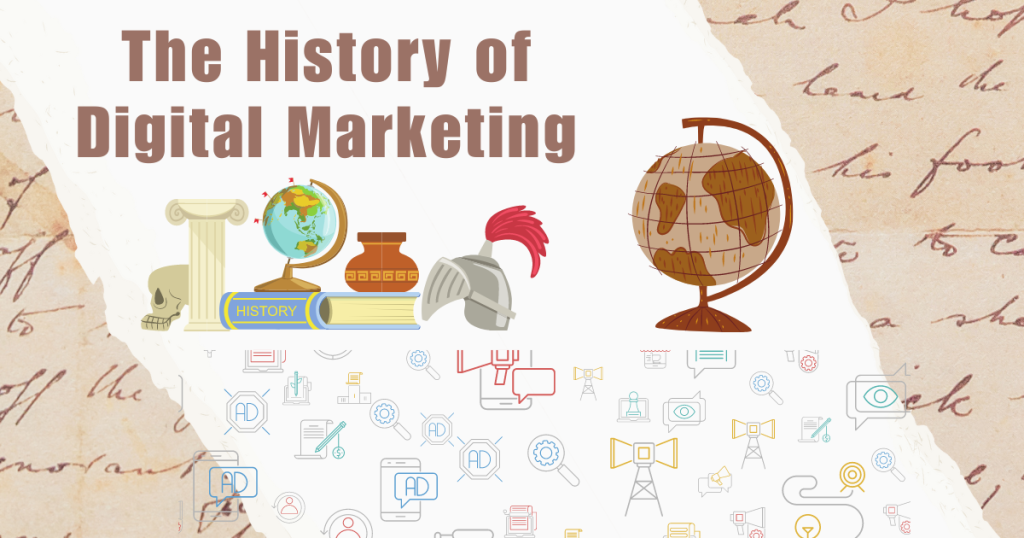
Social Media: The New Frontier (2000s): The early 2000s brought social media to the fore. Platforms like LinkedIn, Facebook, and Twitter weren’t just for connecting with friends; they were a goldmine for businesses. Here was a chance to talk directly to consumers, to engage with them in a space they frequented daily.
Content Takes Center Stage (2000s-2010s): If the 2000s were about discovery, the 2010s were about content. Businesses began to understand that it wasn’t enough to just be online; they needed to provide value. Blogs, videos, infographics – content became the way to capture hearts and minds.
The Rise of Mobile (2010s): Smartphones changed everything. Suddenly, the internet was in everyone’s pocket. Businesses pivoted, focusing on mobile-friendly content and responsive designs. The message was clear: be accessible anywhere, anytime.
Data-Driven Strategies and AI (Late 2010s-Present): Today, we’re in an era where data is king. AI and machine learning aren’t just buzzwords; they’re tools that are reshaping how we approach digital marketing. Personalization isn’t a nice-to-have; it’s a must-have. We’re now tailoring experiences, anticipating customer needs, and making data-driven decisions.
Looking back, the evolution of digital marketing is a reflection of our society’s relationship with technology. From rudimentary email campaigns to AI-driven personalized experiences, it’s a field that’s constantly evolving, mirroring the changes in our digital consumption habits.
Types of Digital Marketing
In the vibrant landscape of digital marketing, businesses find a myriad of pathways to connect with their audience. It’s like a bustling market, each stall offering a unique way to reach and engage people. Let’s walk through these bustling lanes and explore the main types of digital marketing:
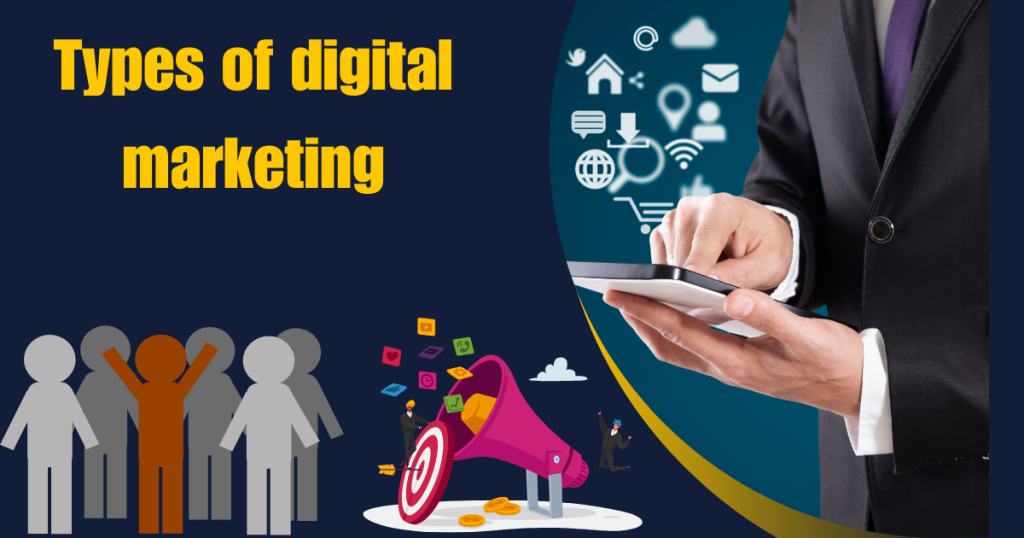
Search Engine Optimization (SEO):
Think of SEO as your guide in the vast digital wilderness. It’s all about tweaking your website and content so when someone asks Google a question, your website pops up as the answer. It’s a mix of using the right keywords, making your website easy for Google to read, and ensuring other websites link to yours as a quality resource.
Content Marketing:
Here, it’s not just about selling; it’s about telling stories that resonate with your audience, be it through blogs, videos, or podcasts. It’s like having a heart-to-heart conversation with your audience, offering them something valuable and building a relationship that goes beyond mere transactions.
Social Media Marketing:
In this digital soiree, platforms like Facebook, Instagram, and Twitter are your stages. It’s where you charm your audience with engaging posts, create a community, and maybe even run a few ads to boost your visibility.
Pay-Per-Click (PPC) Advertising:
PPC is like putting up a billboard on the digital highway and paying only when someone stops by. Google Ads is a popular choice, allowing you to be the top suggestion when someone searches for keywords related to your business.
Email Marketing:
Old but gold, email marketing is like sending a personalized letter to your audience. It’s about keeping in touch, sharing news, and sometimes, a special offer. It’s a way to maintain a warm relationship with your customers.
Affiliate Marketing:
This is where you partner with others to promote your products. They bring the customers; you give them a reward. It’s a dance of mutual benefit, extending your reach through others’ networks.
Influencer Marketing:
Imagine having someone popular at a party vouch for you; that’s what influencers do. They use their social media clout to give your brand a shoutout, tapping into their audience’s trust in them.
Mobile Marketing:
In a world where smartphones are like extra limbs, mobile marketing lets you reach people through apps, texts, and even responsive websites. It’s about being accessible where your audience spends most of their time.
Video Marketing:
With platforms like YouTube, video marketing is like creating your TV show. Whether it’s a product demo, a behind-the-scenes look, or a story, videos can captivate an audience like no other medium.
Online PR and Influencer Outreach:
This is the digital version of public relations. It’s about managing your online presence, engaging with your audience, and collaborating with influencers to paint a picture of your brand that resonates with people.
The Benefits of Digital Marketing
Digital marketing offers a multitude of benefits for businesses of all sizes and types. Here are some of the key advantages:
Reaching Beyond the Horizon:
Digital marketing is like a magical telescope that lets you see and reach people far and wide, crossing oceans and continents. Whether your audience is in the bustling streets of New York or the quiet countryside of France, digital marketing bridges the distance.
Cost-Effective Potions:
For businesses counting their pennies, digital marketing is like a potion that stretches your budget further. Unlike the costly traditional marketing spells, digital marketing offers more for less, allowing even the smallest businesses to make their mark without breaking the bank.
Targeted Charms:
It’s like having a crystal ball that shows you exactly who to talk to. Digital marketing lets you target your audience with precision – age, location, interests, and more – so your message reaches the right people at the right time.
Engagement Rings:
Digital marketing opens up two-way communication channels, much like sitting down for coffee with your customers. Through social media, forums, and emails, you can chat, get feedback, and build relationships that feel more personal and immediate.
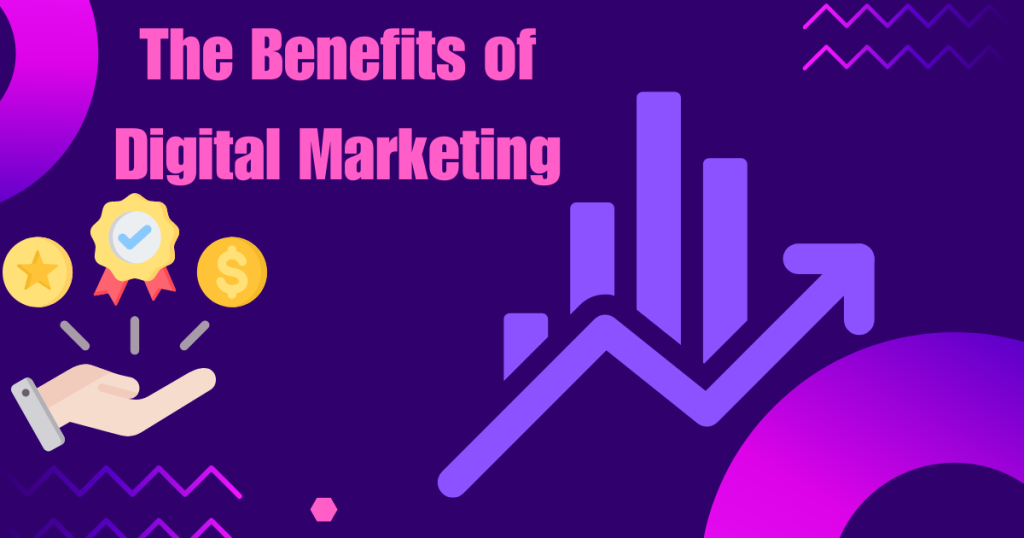
Data Scrolls:
In the world of digital marketing, data scrolls reveal the secrets of your campaigns. Tools like analytics tell you who’s visiting your website, what they’re doing, and which strategies are working. It’s like having a map that shows you where the treasure is.
Conversion Elixirs:
Digital marketing concoctions are known for their potent ability to turn curious onlookers into loyal customers. With strategies like SEO and email marketing, you’re not just reaching people; you’re engaging them, persuading them, and often, converting them into buyers.
Flexibility Cloaks:
The digital marketing world is ever-changing, like the shifting sands of a desert. Here, you have the flexibility to change your strategies quickly – pause a campaign, tweak your ads, or shift your focus – all at the click of a button.
Content Cauldrons:
At the heart of digital marketing is the cauldron where your brand’s story bubbles and brews. Through content marketing, you share your story, educate your audience, and build a brand that resonates and connects.
SEO Lighthouses:
SEO in digital marketing is like a lighthouse, guiding ships – or in this case, customers – to your shores. By optimizing your content, you increase your visibility, making it easier for people to find you in the vast sea of the internet.
Unpacking the benefits of digital marketing is like exploring a map filled with exciting opportunities. Each strategy opens a new door, each tool uncovers a hidden path, all leading to the potential growth and success of your business.
Does Digital Marketing Work For All Businesses?
When we think about whether digital marketing is the right fit for every business, it’s a bit like asking if a key can fit every lock. In essence, digital marketing is incredibly versatile, much like a master key, but the way it works its magic can vary wildly depending on the door it’s trying to open.
Small and Local Businesses:
For the cozy cafe at the corner or the local bookstore, digital marketing can be like a friendly neighborhood whisperer, spreading the word about their unique charm. Tactics like local SEO and targeted social media campaigns are their cup of tea, helping them become a beloved spot in the community.
E-commerce Giants:
Then, there are the online retail giants, for whom digital marketing is a massive megaphone, broadcasting their vast array of products to a global audience. Here, strategies like SEO, PPC, and email marketing aren’t just helpful; they’re the lifeblood of their business.
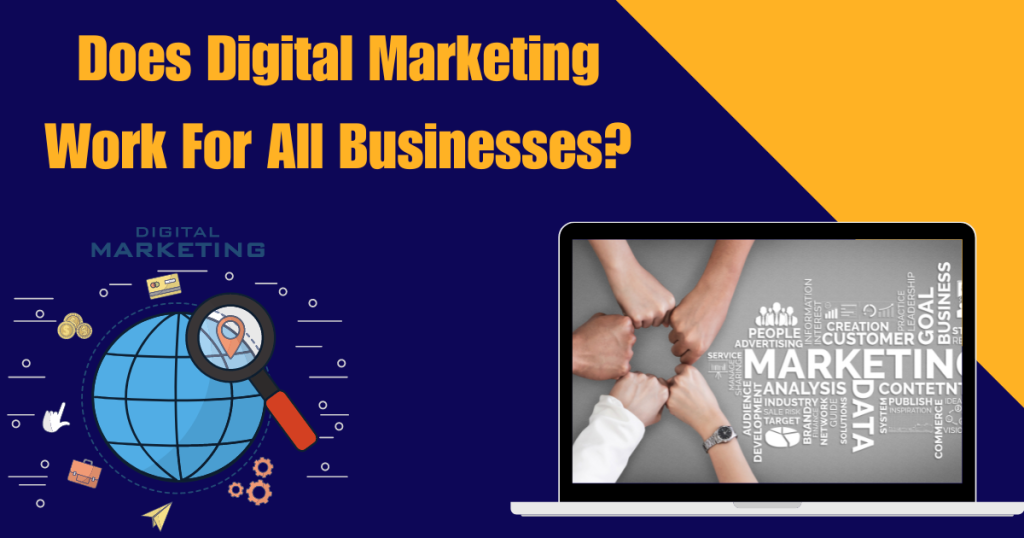
B2B Enterprises:
In the world of B2B, where the sales cycle is longer and often more complex, digital marketing acts like a firm, trust-building handshake. It’s less about quick sales and more about nurturing relationships over time, often through content marketing and LinkedIn networking.
B2C Companies:
For businesses directly selling to consumers, digital marketing becomes a vibrant showroom, showcasing their products or services in an engaging, visually appealing way. Social media marketing and influencer collaborations shine here, drawing in consumers with their allure.
Service Providers:
For those offering services, from lawyers to plumbers, digital marketing works like a dynamic, interactive business card. It’s all about building credibility and showcasing expertise, often through informative content and solid SEO strategies.
Startups:
For startups, digital marketing is like an essential launchpad, helping them skyrocket into public awareness. It’s about creating buzz, often through innovative social media campaigns and viral marketing.
Niche Markets:
And let’s not forget businesses in niche markets. Here, digital marketing acts like a magnifying glass, focusing intensely on a specific, targeted audience, sometimes scattered across vast geographies.
How to Create a Digital Marketing Strategy?
Creating a digital marketing strategy is like planning a grand adventure in the online world. Let’s map out this journey:
Define Your Brand:
Just like every hero in a story has a unique character, your brand should have its own identity. What’s your story? What makes you different? This is your compass as you navigate the digital landscape.
Set Goals Like Plot Points:
Every good story has key moments; in your strategy, these are your goals. Do you want to increase your online sales, grow your email list, or boost your brand’s visibility? Pin these goals down like destinations on your map.
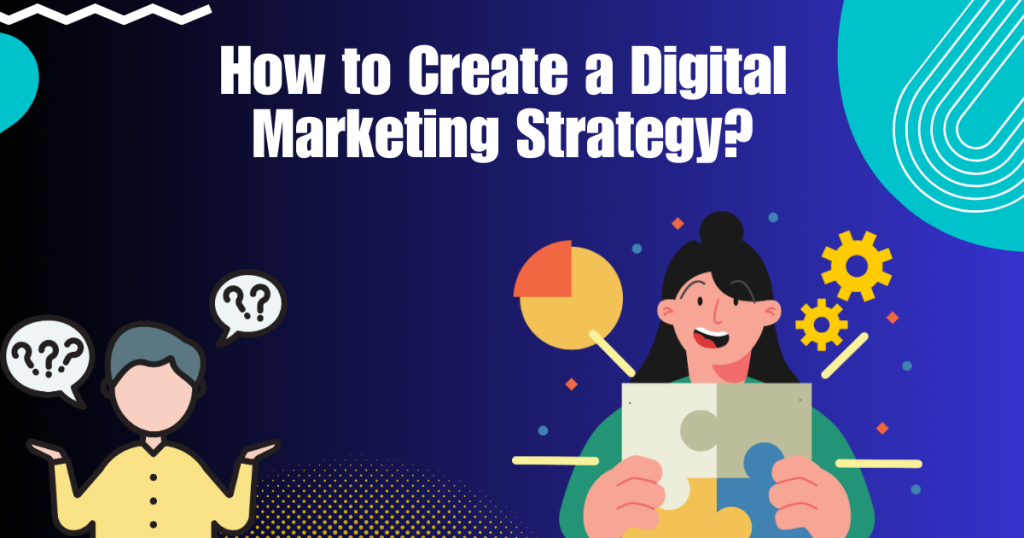
Understand Your Audience:
Who are you talking to? What do they like, what do they need? Understanding your audience is like getting to know the characters in your story – it makes the journey more meaningful and tailored.
Check Your Tools:
Take a look at what you already have. Maybe you have a website that’s more like a hidden treasure, or a social media account that’s a powerful wand. Know your tools and how to use them.
Choose Your Channels:
Will you trek through the dense forests of social media, climb the SEO mountains, or sail the seas of email marketing? Choose the channels that will best carry your message to your audience.
Create Your Content:
Content is your magic spell in the digital world. Be it blogs, videos, or social media posts, make sure they are captivating and valuable. This is how you engage with your audience and keep them spellbound.
Optimize for SEO:
SEO is like using the stars to navigate. It guides people to your website when they’re searching for something you offer. Use the right keywords and make your website easy to find and explore.
Social Media:
Here, you can have real-time conversations with your audience, share stories, and build a community. Each platform is a different part of the forest, with its own rules and creatures. Choose where you belong and thrive there.
Email Marketing:
Send out these bottles regularly to reach the shores of your audience’s inboxes. Whether it’s news, offers, or stories, make each email worth opening.
Analyze and Adapt:
The digital world is ever-changing. Keep an eye on your progress, see what works and what doesn’t, and be ready to change your course. Use tools to read the stars and understand your journey’s impact.
Stay Agile:
Be ready to explore new paths or pivot your strategy. Digital marketing is an adventure full of surprises. Stay curious and agile.
How Digital Marketing Works?
Exploring how digital marketing works is like unraveling the secrets of a grand magic show. It’s a blend of art, science, and a bit of magic that, when done right, can captivate an audience like nothing else. Let’s pull back the curtain and see how this magic happens:
Knowing Your Audience:
Every magician knows their audience. In digital marketing, understanding your audience is key. It’s about knowing who they are, what they like, what they need, and even what keeps them up at night. This knowledge is the cornerstone of your strategy, ensuring your efforts resonate and engage.
Setting the Stage:
Before the show begins, a magician sets their intentions. What do you want to achieve with your digital marketing? Are you looking to dazzle with brand awareness, conjure up leads, or enchant with increased sales? Setting clear, measurable goals gives your digital marketing purpose and direction.
Choosing the Tricks:
A magician has many tricks up their sleeve, and so does digital marketing. Whether it’s the spectacle of social media, the enchantment of SEO, or the allure of email marketing, each channel offers its unique kind of magic. The trick is choosing the ones that best suit your audience and goals.
Crafting the Spell:
The content you create is like the spell you cast. It should be engaging, informative, and, most importantly, valuable to your audience. This could be in the form of captivating blog posts, mesmerizing videos, or compelling social media posts.
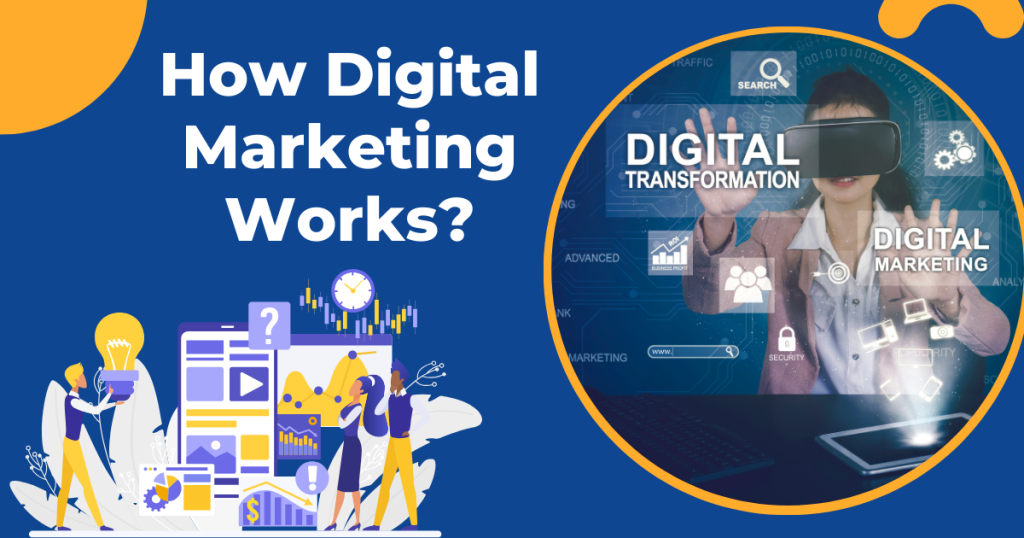
The SEO Illusion:
SEO is like the illusionist’s act of making things appear out of thin air. By optimizing your content and website, you make your brand more visible in the vast digital world, ensuring your audience finds you at just the right moment.
The Show Begins:
Launching a digital marketing campaign is like the grand opening of a magic show. Each campaign should captivate, engage, and leave your audience wanting more, all while drawing them closer to your brand.
Measuring the Applause:
In digital marketing, analytics are your applause. They tell you how well your performance (campaign) resonated with the audience. Regularly analyzing these results helps you understand what works, what doesn’t, and how you can improve your next show.
Adjusting the Performance:
A good magician adapts to their audience. In digital marketing, this means staying flexible and ready to tweak your strategies. The digital world is ever-changing, and so should your approach to keep the magic alive.
Building Connections:
Finally, the most memorable part of any magic show is the connection between the magician and their audience. In digital marketing, this is about building relationships, engaging in conversations, and creating a community around your brand.
Inbound Marketing vs. Digital Marketing
Imagine you’re in a vast forest, rich with different sounds, sights, and paths. This forest is the world of marketing, and within it, two main paths beckon – Inbound Marketing and Digital Marketing. Each path offers its unique journey, and understanding these can help you find the best route for your brand.
Inbound Marketing | The Heartfelt Storyteller
Inbound Marketing is like a wise storyteller, gathering an audience around the campfire. This path is about creating a warm, inviting glow that naturally draws people in. It’s not about chasing or calling out to passersby; it’s about attracting them with compelling, valuable stories.
Crafting Tales That Resonate: Think of each piece of content as a story – be it a blog post, an eBook, or a podcast. These stories are carefully woven with information, emotion, and solutions, addressing the needs and curiosities of your audience.
The Art of Listening and Responding: Just as a good storyteller listens to their audience, Inbound Marketing involves understanding and responding to the audience’s feedback. It’s a two-way conversation, where you learn, adapt, and grow with your audience.
Building Relationships Over Time: This path is about nurturing a connection. Like a gardener who tends to their plants, Inbound Marketing requires patience and care. It’s about growing trust and establishing your brand as a reliable, knowledgeable companion in your audience’s journey.
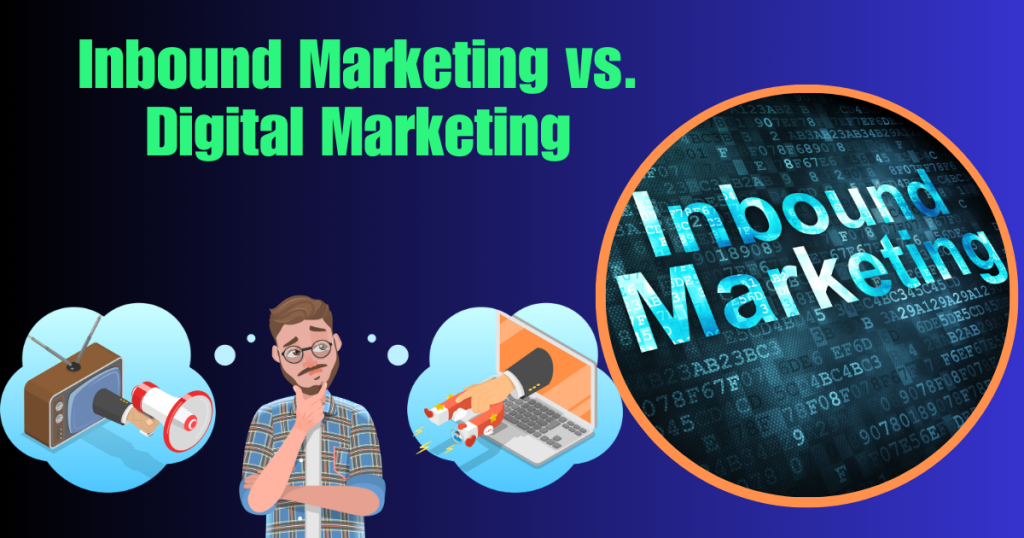
Digital Marketing | The Diverse Bazaar
Digital Marketing, in contrast, is like a bustling bazaar within the forest. It’s lively, diverse, and vibrant, filled with various stalls (channels) and merchants (strategies). This path is all about reaching out to people where they are, using a variety of methods to engage them.
- A Kaleidoscope of Strategies: From the colorful tapestries of social media to the enticing aromas of SEO, Digital Marketing involves a broad spectrum of tactics. It’s about using the right mix of methods to reach your audience, whether they’re browsing online, scrolling through social media, or searching for something specific.
- The Agility of the Merchant: Digital Marketing requires the agility of a seasoned merchant. You must be ready to adapt to the ever-changing preferences of the market. What’s trending? What’s fading? Like a merchant who knows when to change their goods, a digital marketer needs to stay ahead of the curve.
- Creating a Symphony of Engagement: In this bazaar, your message can be loud (paid ads) or a soft melody (email marketing). The key is to create a symphony that attracts and delights, leading visitors from the fringes of the bazaar to the heart of your brand’s story.
In this forest of marketing, your journey might weave through both these paths. You might start with the wide-reaching calls of the Digital Marketing bazaar, drawing in a crowd. Then, as they come closer, you transition to the intimate, engaging tales of Inbound Marketing. It’s a dance between the two, each step designed to create a deeper, more meaningful connection with your audience.
B2B vs. B2C Digital Marketing
In the expansive realm of digital marketing, two paths diverge in the woods: one leads to the land of B2B (Business-to-Business), and the other winds its way to B2C (Business-to-Consumer). Each path has its own scenery, challenges, and rewards. Let’s take a walk down each of these paths to understand their unique landscapes.
B2B Digital Marketing | The Path of Partnership
Walking down the B2B path is like navigating a trail of long, winding conversations and developing deep partnerships. It’s a journey where trust and expertise are your guides.
Building Trust Brick by Brick: In B2B, your digital marketing efforts are like laying bricks to build a bridge of trust. It’s about showing your expertise, understanding your clients’ complex needs, and proving that you’re a reliable partner in their business journey.
The Art of Thought Leadership: Content in B2B marketing is like a series of insightful lectures at a professional conference. You share in-depth reports, whitepapers, and case studies, showcasing your knowledge and positioning yourself as a thought leader.
Navigating the Maze of Decision Making: Decisions in the B2B world often involve a maze of approvals and evaluations. Your digital marketing needs to speak to different levels of this hierarchy, addressing the specific concerns and interests of each decision-maker.

B2C Digital Marketing | The Festival of Engagement
In contrast, the B2C path is like a vibrant festival filled with colors, emotions, and immediate connections. It’s a bustling marketplace where engagement and brand personality shine brightest.
Creating Emotional Connections: B2C digital marketing is about creating an emotional bond with your audience. It’s like a performer on a festival stage, forging a connection with every song, dance, or act. Your campaigns should resonate on a personal level, tapping into the desires and emotions of your consumers.
The Carousel of Content: Content in B2C spins like a carousel – it’s fun, engaging, and often fast-paced. Social media posts, blogs, and videos are lighthearted, entertaining, and designed to capture the fleeting attention of your audience.
The Instant Gratification Effect: The B2C audience often seeks immediate solutions and gratifications. Your digital marketing should be like a magician pulling the rabbit out of the hat – quick to amaze and deliver. Whether it’s an easy checkout process or a catchy ad, speed and simplicity are key.
In the forest of digital marketing, whether you tread the path of B2B or dance through the lanes of B2C, the essence lies in understanding the terrain and the travelers you meet along the way. Each journey requires its unique set of skills, strategies, and storytelling techniques to connect, engage, and succeed.
The Role of Social Media in Digital Marketing
Venture into the lively and ever-evolving garden of social media within the world of digital marketing. This garden is where seeds of connection are planted, nurtured, and grown into thriving relationships. It’s a place of vibrant interaction, colorful displays, and engaging conversations. Let’s take a stroll through this garden and see how social media cultivates connections.
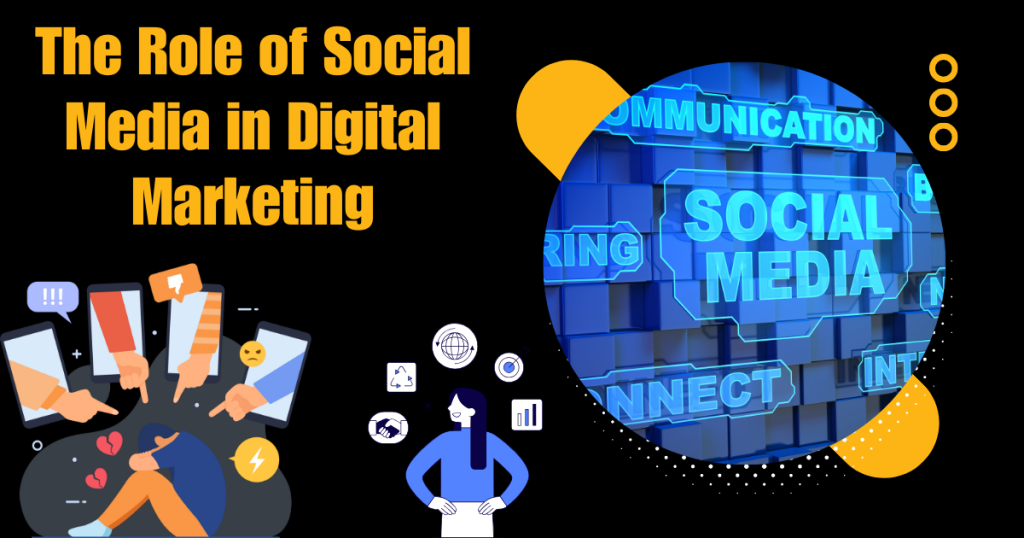
Building Brand Awareness: Planting the Seeds
In the social media garden, every post you make plants a seed of awareness about your brand. It’s like setting up a little signpost in a vast field, catching the eye of passersby. Regular, engaging posts are like watering these seeds, helping the awareness of your brand to grow and blossom.
Engaging with the Audience: Tending to Your Plants
Engagement on social media is like tending to the plants in your garden. Every comment, like, and share is a way of nurturing these relationships. It’s about having conversations, showing appreciation for their attention, and fostering a community around your brand.
Targeted Advertising: Cultivating Specific Areas
Targeted advertising on social media is akin to carefully cultivating a specific area of your garden. It involves understanding the conditions – the likes, interests, and behaviors of your audience – and tailoring your efforts to create a vibrant, flourishing space that appeals directly to them.
Driving Website Traffic: Laying Pathways
Think of your social media efforts as laying down pathways in your garden that lead visitors to your website. It’s about creating intriguing trails that invite people to explore further, to step off the social platform and onto your site for a deeper experience.
Content Promotion and Distribution: Spreading Pollen
In this garden, your content is like pollen, and social media is the breeze that carries it. By sharing blog posts, videos, and other content, you’re spreading your brand’s message far and wide, reaching new corners of your audience.
Gathering Market Insights: Listening to the Nature
Just as a gardener listens to the sounds of nature, social media allows you to listen to the voices of your market. Through comments, feedback, and trends, you gain valuable insights into what your audience loves, fears, and desires.
Influencer Collaborations: Cross-Pollination
Working with influencers is like cross-pollination in your garden. These influencers bring their own audience, a new type of flower, to your garden, enhancing its diversity and reach.
Customer Service and Support: Tending to Individual Flowers
Social media also serves as a platform for nurturing individual connections – providing customer service and support. It’s like tending to each flower individually, ensuring they feel heard, valued, and cared for.
Measuring Success: Watching Your Garden Grow
Finally, measuring your success on social media is like stepping back and watching your garden thrive. It’s about seeing which plants are blooming, which need more care, and understanding the overall health of your garden.
SEO A Key Component of Digital Marketing
Search Engine Optimization (SEO) is a fundamental aspect of digital marketing. It involves optimizing your website and content to rank higher in search engine results pages (SERPs), thereby increasing organic (non-paid) traffic. Here’s why SEO is crucial in digital marketing:
Tuning the Instruments: Website Optimization
Just as a conductor tunes the orchestra before a performance, SEO begins by fine-tuning your website. It involves adjusting various elements – like site speed, mobile-friendliness, and user-friendly navigation – to ensure they work in harmony, providing a seamless experience for your visitors.
Composing the Music: Keyword Strategy
Selecting the right keywords is like composing the music for your symphony. These keywords are the notes that resonate with your audience’s searches, forming the melody that leads them to your website. It’s about understanding what your audience is looking for and crafting content that sings those notes clearly and beautifully.
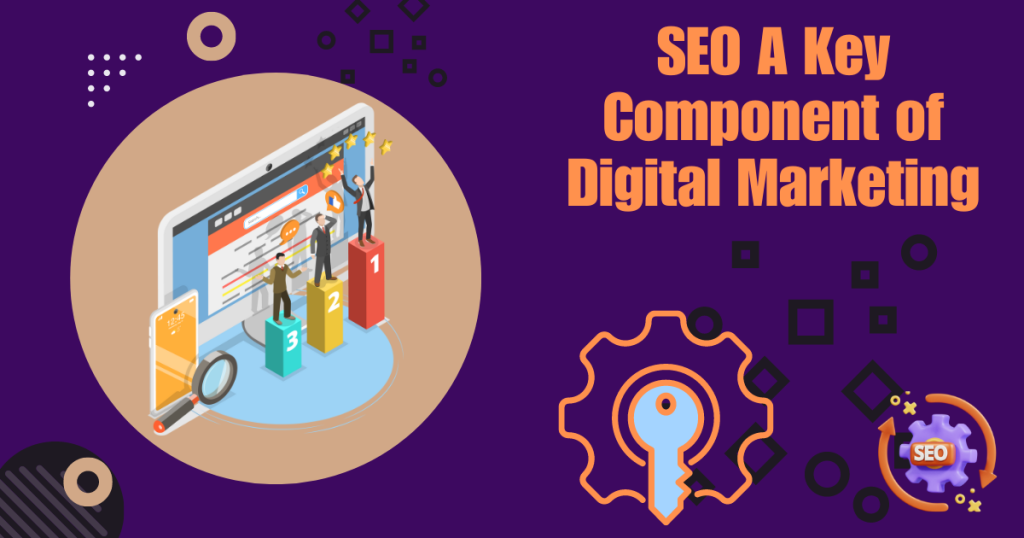
Harmonizing the Sections: On-Page and Off-Page SEO
In SEO, on-page optimization (like content and meta tags) and off-page elements (like backlinks) must harmonize. It’s like ensuring the strings and woodwinds play in sync, each complementing the other to create a more powerful performance.
Creating a Masterpiece: Quality Content
Content in SEO is akin to the soulful solo in the symphony. It needs to be captivating, informative, and emotionally resonant. High-quality, valuable content not only pleases the search engines but also touches the hearts (and minds) of your audience, making them return for more.
Responding to the Audience: User Experience
A skilled conductor is always attentive to the audience’s response. Similarly, SEO involves creating a user experience that delights and satisfies. It’s about providing answers, solutions, and a pleasant journey through your website, keeping the audience engaged and connected.
Adapting to Acoustics: Algorithm Updates
Just as a conductor adapts to the unique acoustics of each concert hall, SEO requires adapting to the ever-changing algorithms of search engines. It’s a dance of flexibility and resilience, staying updated with the latest changes and adjusting your strategies accordingly.
The Standing Ovation: Achieving High Rankings
When the orchestra performs beautifully, the audience rises for a standing ovation. In SEO, this is akin to achieving high rankings on search engine results pages. It’s the moment when all your efforts harmonize perfectly, drawing applause in the form of organic traffic and visibility.
How Much Will Digital Marketing Cost My Business?
When you step into the world of digital marketing, the first question that often comes to mind is, “How much will this cost my business?” It’s a valid query, given that the budget plays a pivotal role in shaping your marketing strategy. However, the answer isn’t straightforward. Just like personalizing a home, the cost of digital marketing is tailored to your business’s unique needs, goals, and the scale of your ambitions.
Business Size and Goals:
- Your business’s scale and marketing objectives are the compass guiding your budget. A small local business with modest aims won’t shell out the same amount as a multinational company eyeing global domination.
- Consider digital marketing as a tailored suit – it should fit your business perfectly. This customization means costs can vary significantly from one enterprise to another.
Choice of Marketing Strategies:
- The digital marketing umbrella is broad – encompassing everything from SEO to social media campaigns. Each of these strategies carries its own price tag.
- For instance, SEO and content marketing might demand a significant initial investment but could save money in the long haul. In contrast, pay-per-click (PPC) advertising, while offering immediate results, might prove more expensive over time due to ongoing costs.
In-House vs. Outsourcing:
- Deciding between nurturing an in-house team and outsourcing to a specialized agency can significantly impact your budget.
- Building an in-house team means considering salaries, training, and tools. Outsourcing to an agency, though possibly more costly upfront, can bring in a wealth of experience and specialized skills.
Tools and Software Requirements:
- The digital marketer’s toolbox – filled with SEO platforms, social media management tools, and analytics software – varies in cost.
- While some basic tools are free, premium versions offering more advanced features can escalate the budget.
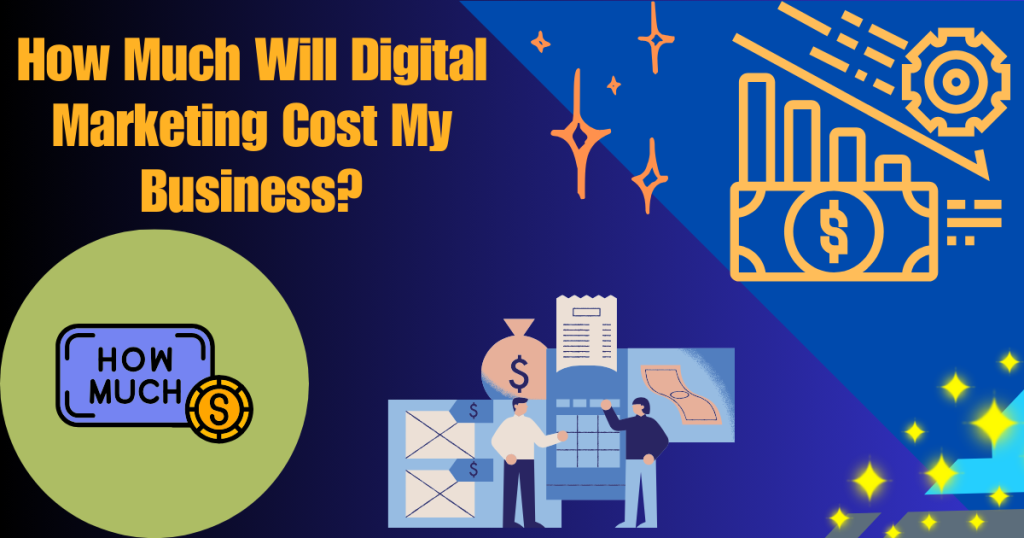
Content Creation Costs:
- Content is king in the digital world. Budgeting for high-quality writing, engaging graphics, and compelling video production is a must for a successful strategy.
- Remember, content isn’t just about quantity; the quality and relevance to your audience are what truly count.
Advertising Expenditure:
- Paid advertising forms a substantial part of many digital strategies. This could include social media ads, Google AdWords, or sponsored content.
- Your ad budget should reflect your goals – more competitive industries often require a higher spend to make a mark.
Website Development and Maintenance:
- In the digital age, your website is often the first point of contact with customers. Thus, investing in its design, functionality, and regular upkeep is crucial.
- This could range from a simple, clean layout for a small business to a complex, feature-rich site for larger enterprises.
Analytics and Reporting:
- Keeping tabs on your marketing efforts through analytics tools is non-negotiable. While many offer free basic versions, more comprehensive analysis might need a paid subscription.
As a general rule, small to mid-sized businesses might consider dedicating about 7-12% of their total revenue to marketing, with a significant chunk allocated to digital avenues. This percentage reflects the growing importance of digital channels in reaching modern audiences.
Digital Marketing Challenges and Solutions
While digital marketing offers numerous opportunities, it also comes with its own set of challenges. Understanding these challenges and their solutions is crucial for successful digital marketing. Here are some common challenges and ways to address them:
Challenge: Keeping Up with Changing Algorithms
Solution: Search engines and social media platforms frequently update their algorithms. To keep up, stay informed about these changes, regularly update your strategies, and focus on creating high-quality, relevant content.
Challenge: Data Privacy and Regulation Compliance
Solution: With increasing concerns over data privacy, comply with regulations like GDPR. Be transparent about how you collect and use customer data, and ensure your marketing practices respect user privacy.
Challenge: Standing Out in a Crowded Digital Space
Solution: Differentiate your brand through unique branding, personalized content, and a distinct voice. Understand your audience deeply and create content that resonates with them.
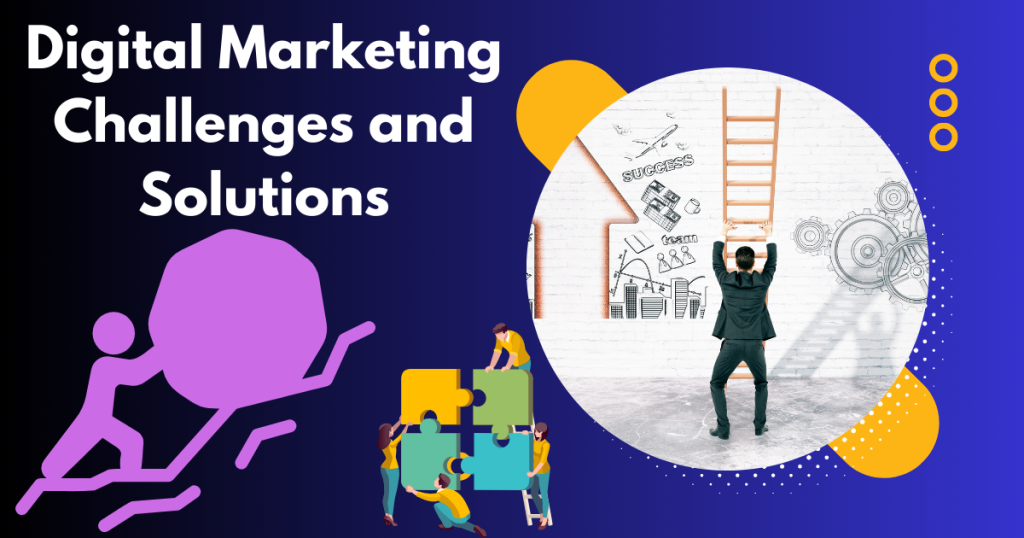
Challenge: Measuring ROI and Performance
Solution: Use analytics tools effectively to track key performance indicators. Set clear goals and metrics from the start, and regularly review and adjust your strategies based on the data you collect.
Challenge: Generating Quality Leads
Solution: Focus on targeted marketing strategies like SEO, content marketing, and social media advertising. Create valuable content that addresses the specific needs and interests of your target audience to attract quality leads.
Challenge: Keeping Pace with Technology
Solution: Stay updated with the latest digital marketing tools and technologies. Attend webinars, join online forums, and follow industry news to keep abreast of technological advancements.
Challenge: Creating Engaging Content
Solution: Invest in creative talent, whether in-house or outsourced, to produce engaging and original content. Experiment with different formats, like videos, infographics, and interactive content.
Challenge: Balancing Automation and Personalization
Solution: While automation tools can enhance efficiency, they should not replace personalization. Use automation smartly while ensuring that your content and interactions feel personal and authentic to your audience.
Challenge: Adapting to Multi-Channel Strategies
Solution: Manage your presence across multiple channels effectively by understanding the unique aspects of each platform. Develop a cohesive multi-channel strategy that provides a consistent brand message across all channels.
Challenge: Budget Constraints
Solution: Allocate your budget based on what delivers the best ROI. Focus on cost-effective strategies like SEO and content marketing, and use analytics to assess which channels are most effective for your goals.
Addressing these challenges requires staying informed, being adaptable, focusing on quality content, understanding your audience, and using analytics to guide your decisions.
Conclusion
In summary, digital marketing stands as a crucial component of contemporary business strategies, blending creativity and technology to innovatively connect with audiences. It hinges on a deep understanding of the audience, ensuring tailored strategies that resonate and convert. With the digital arena constantly evolving, adaptability and the integration of diverse tactics—from SEO to social media, content creation, and beyond—are essential. At its core, compelling content drives engagement, while a data-driven approach optimizes outcomes.
SEO’s role remains fundamental, enhancing visibility and organic reach. Moreover, leveraging cutting-edge tools and focusing on ROI are pivotal, turning challenges into opportunities for innovation. Keeping abreast of trends like AI and immersive technologies positions businesses for future success. Effectively wielding digital marketing fosters significant online presence, cultivates enduring customer bonds, and propels business growth through strategic, creative, and analytical prowess in an ever-changing digital landscape.

Amazing post! I am essentially satisfied with your great work. You put truly supportive data. First of all people are not interested to consult anyone about their financial life or matter. It’s true that sometime it might be getting negative response.